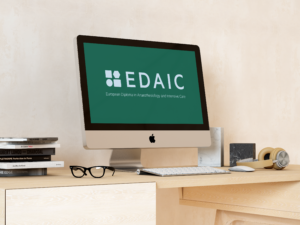Newsletter 2022
Newsletter January 2022: Educational Needs in Anaesthesiology and Intensive Care: a snapshot of 2021
Joana Berger-Estilita1, Teodora Nicolescu2, Andrea Kollmann Camaiora3
Department of Anaesthesiology and Pain Medicine, Inselspital Bern University Hospital, University of Bern, Bern, Switzerland
Department of Anesthesiology, University of Oklahoma Health Sciences Center, Oklahoma City, Oklahoma USA
Department of Anaesthesiology, Akademiska Sjukhuset, Uppsala University Hospital
Corresponding Author: Andrea Kollmann Camaiora, a.koll.cam@gmail.com
Throughout their careers, anaesthesiologists face the ongoing challenge of managing the growth of relevant knowledge. The current strategy by which anaesthesiologists update their knowledge of recent advances is via continuing medical education (CME), which is increasingly viewed as an essential tool for improving the quality of medical care1-2. While the concept of CME is well established, its effectiveness would be severely limited if it did not meet the needs of the learners3. On the other hand, as anaesthesia undergoes an information explosion, technology must be used to prioritise information, highlight critical data, and guide the care process3-5. Thus, the challenge we face as members of the eLearning Committee of the European Society of Anaesthesiology and Intensive Care (ESAIC) is to provide appropriate educational activities in a way that will meet the current needs of anaesthesiologists. Therefore, the eLearning committee has recently conducted an educational needs assessment survey. The intent was to determine what those needs were and to align technological advancements with the products offered. The completed survey serves as the base for the eLearning committee to initiate new strategies to better assist in the learning process and increase diversity, equity, and inclusion within the content and participation.
A questionnaire consisting of 15 items covering the topics of eLearning, Simulation, Gender Equity, Sustainability, and Education was distributed to ESAIC members between June 16th and 30th 2021 via an email blast and both the ESAIC and the Trainee Network social media outlets.
We received 694 answers from 79 countries, 41 of them in Europe. Most answers came from experienced anaesthesiologists, 30 to 60 years old. Less than 10% of answers were from trainees, and we had an 8% gap in answers between men (54%) and women (46%). Most responders were involved in general anaesthesiology, intensive care medicine and regional anaesthesia.
Most members prefer to be informed by email (92%). However, when we performed a subgroup analysis of trainees, most (86%) preferred to be informed by email, and 41% by social media (compared to 18% in the overall answers). These results imply that one goal for 2022 will be to expand ESAIC social media channels to disseminate learning activities primarily aimed at trainees. Around 7% of respondents seem to fail to receive ESAIC emails, so a targeted campaign asking members to update their contact information will begin.
Sixty-five per cent of participants were satisfied or very satisfied with the current educational offer, and 30% were neutral. The main motivations for attending the ESAIC educational activities included knowledge improvement and staying up to date. The Euroanesthesia Congress and the eLearning Webinars were the most popular activities (74% and 77%, respectively). A subset of trainees showed significant interest in the Basic and Clinical Sciences Anesthetic Course (BCSAC) and other EDAIC-related activities.
Webinars are a highly popular educational activity, boasting the community’s highest satisfaction rate (82%) with 75% of responders having attended at least once. The main reason pointed out for this was the quality of our faculty. The e-Learning committee is always in constant communication with the other ESAIC committees to find the right speaker for the suitable lecture.
We used the question on the likelihood to recommend ESAIC to a friend to calculate the Net Promoter Score (NPS) for our sample. The NPS methodology is used to infer «customer loyalty» to a brand, which we used as a surrogate to loyalty to the ESAIC. We got a value of 41, which is considered great, but there is still room for improvement.
During the current COVID-19 pandemic, online activities were thriving, but what happens after it? The pandemic taught us that distance-learning events are feasible and often preferred to face-to-face events. This raises questions regarding which type of educational activities our members want in the future, and almost 90% of respondents were positive to continue online education.
Respondents were also interested in having more informal online events without CME accreditation, and the preferred topics included general anesthesiology, intensive care medicine, regional anaesthesia and perioperative care. Non-clinical subjects like leadership, self-development and sustainability were also highly ranked. The topic of COVID-19 was the least preferred, and the eLearning committee is not planning more activities. However, we highly recommend you watch the open-access webinar from November 2021: How the COVID-19 pandemic changed anaesthesiology clinical practice – Lessons Learned; host in the ESAIC Academy.
After reviewing the survey results, the eLearning committee, together with the Education Committee, has developed specific strategies to address the survey expectations.
From 2022 we are upgrading the educational experience for our community with the introduction of a comprehensive education programme called «Education Tuesday». We will offer several formal and informal activities like podcasts, videocasts, live on Facebook events, microlearning activities, infographics on guidelines and of course continue with our most curated activity, the webinar.
While knowledge refreshers will always be popular and therefore stay on the agenda, a new topic for webinars has also been considered. Such topics include sustainability and environmental awareness in anaesthesiology, women leadership and gender equity. Our aim with this activity is to expand on the affective skills that webinars offer and provide the opportunity to promote knowledge in less addressed areas. These topics are planned for the Spring of 2023. Other planned topics will address technological progress such as artificial intelligence, high fidelity simulation, and new tools and gadgets to aid a successful anaesthesiology practice. Finally, “How to prepare for the EDAIC» is a highly petitioned topic from the trainees. We are organising several educational activities with a hands-on approach to be launched in October 2022.
As we conclude our survey results and their impact on the planning of our educational activities, we look forward to meeting the challenge of diversification of the currently offered eLearning products. We also look forward to the more inclusive topics of gender equity, leadership, and sustainability as they will build the foundation for having new affective skills and expanding knowledge on such subjects. Our goal is to make ESAIC a top education destination for anesthesiologists all over the globe. Come join us live or as a webcast by accessing the eLearning ESAIC Academy (academy.esaic.org) with your personal login details.
References
- Weller JM, Naik VN, San Diego RJ. Br J Anaesth. 2020 Jun;124(6):748-760.
- Wong A. Can J Anaesth. 2012 Feb;59(2):171-81.
- Chu LF, Erlendson MJ, Sun JS, et al. Best Pract Res Clin Anaesthesiol. 2012 Mar;26(1):33-53. doi: 10.1016/j.bpa.2012.02.002.
- Nelsen BR, Chen YK, Lasic M, et al. Curr Opin Anaesthesiol. 2020 Dec;33(6):800-807.
- Chuan A, Wan AS, Royse CF, et al. Br J Anaesth. 2018 Feb;120(2):264-273.













